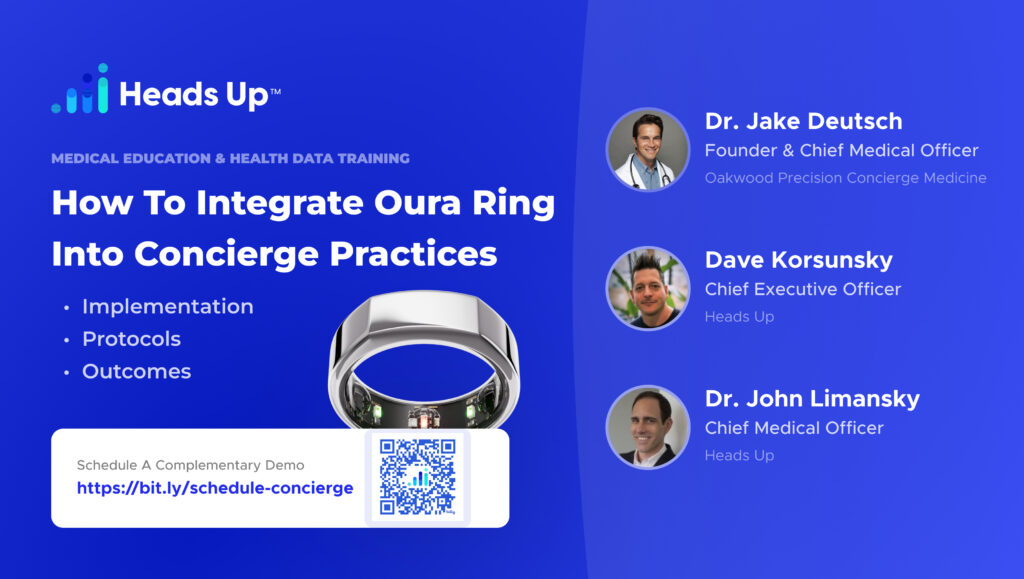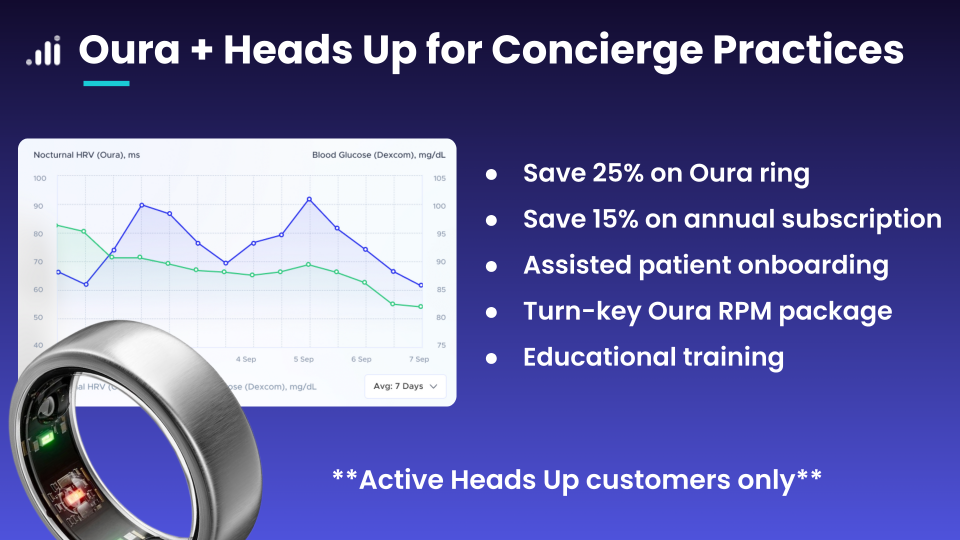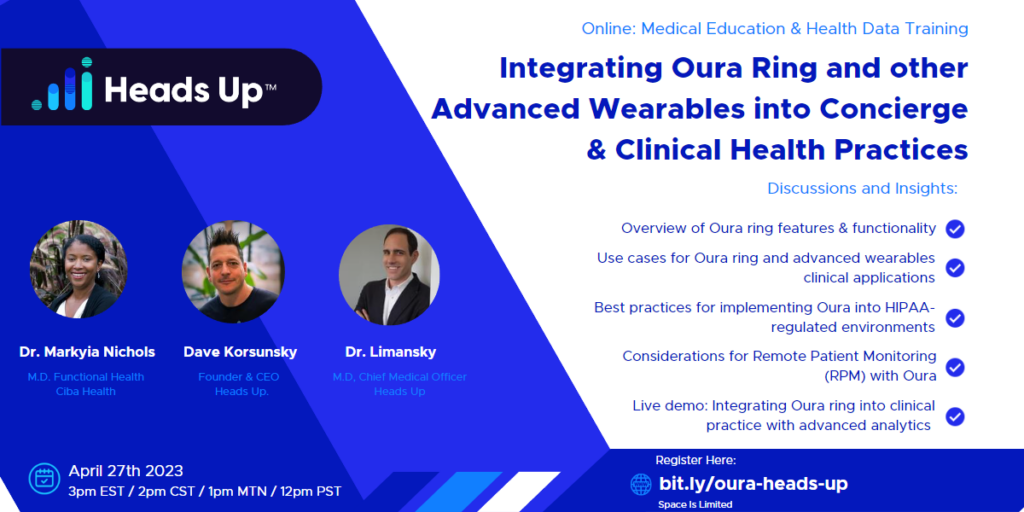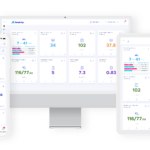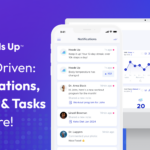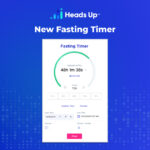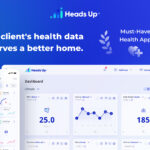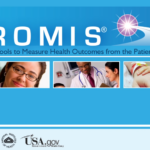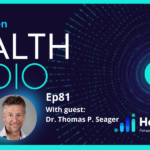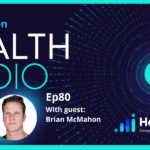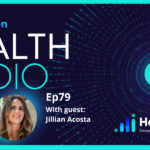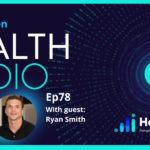How Top Concierge Practices Quantify Longevity Outcomes
Discover How Top Longevity Experts Measure, Track, and Improve Their Client’s Biological Age.
Resources:
Introduction
Blue Wave Medicine is a cutting-edge practice that combines traditional and modern medical approaches to measure and improve biological age.
In this article, we delve into the insights shared by Dr. Brad Jacobs in the webinar “How Top Practices Quantify Longevity Outcomes,” focusing on the diagnostics, interventions, and holistic approaches used to enhance longevity.
Measuring Biological Age
Biological age testing is at the forefront of longevity research. Unlike chronological age, biological age provides a more accurate representation of an individual’s health and aging process. Key methods of measuring biological age include:
- Methylation Testing: This test examines the pattern of DNA methylation, which changes with age. It helps identify how gene expression is influenced by aging.
- Telomere Length Testing: Telomeres protect chromosome ends, and their length decreases as cells divide and age. Measuring telomere length helps assess cellular aging.
- Inflammation Markers: Chronic inflammation accelerates aging. Markers like highly sensitive CRP provide insights into inflammation levels and associated risks.
Practical Applications
In clinical practice, these tests are used to establish baselines and monitor progress over time. Dr. Jacobs employs various interventions to improve longevity, including:
- Lifestyle Changes: Diet, exercise, and stress management are fundamental. For example, fasting protocols and personalized nutrition plans can significantly impact biological age.
- Advanced Diagnostics: Integrating regular lab tests (e.g., fasting insulin, hemoglobin A1c) with biological age tests provides a comprehensive health overview.
- Data Tracking: Using platforms like Heads Up, practitioners can integrate multiple health data points, making it easier to track and analyze progress.
Quantifying longevity outcomes requires a multifaceted approach that integrates advanced diagnostics, lifestyle interventions, and psychospiritual health. By combining these elements, practitioners like Dr. Brad Jacobs can provide comprehensive care that not only extends life but also improves its quality.
Want to implement this longevity software in your practice?
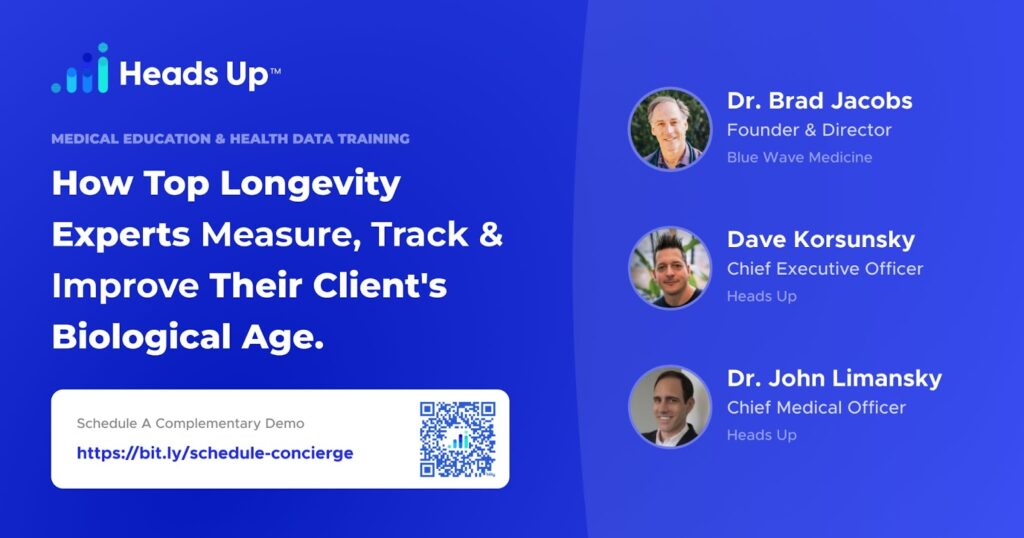
Longevity Software + Webinar Overview
This training revolved around the latest diagnostic tools and techniques for measuring biological age and improving longevity. Dr. Brad Jacobs shared his expertise in using these diagnostics in his clinical practice, while his guests provided valuable insights on the psycho-spiritual aspects of longevity.
The group discussed the importance of a multi-omic approach to biological age testing and emphasized the need for understanding individual vulnerabilities in aging. They also integrated traditional and alternative medicine practices for achieving lasting healthspan and behavior change.
Additionally, they discussed various methods for assessing and intervening on aging at a personalized level, including measuring telomere length, inflammation markers, and metabolomics.
Summary
- 🧑⚕️ Introduction to Dr. Brad Jacobs: Dr. Brad Jacobs introduces himself and discusses the agenda of the webinar, which includes measuring biological age and improving longevity through various practices.
- 🧬 Measuring Biological Age: Overview of different diagnostics and tests used to measure biological age, including methylation, telomere length, and inflammation markers.
- 🏋️♂️ Practical Applications: Dr. Jacobs shares how these tests are applied in his practice, the interventions used to improve longevity, and the importance of tracking progress.
- 🧘 Psychospiritual Aspects: Emphasis on the significance of psychospiritual health and the methods Dr. Jacobs employs to address psychological and spiritual barriers to longevity.
- 📊 Data Integration: Discussion on the importance of integrating various health data points using platforms like Heads Up to provide a comprehensive view of patient health and progress.
Insights Based on Numbers
- Biological Age Testing: Tests like methylation and telomere length provide insights into biological age, showing how different pathways influence aging. These tests are crucial for identifying individual vulnerabilities.
- Health Metrics: Metrics such as fasting insulin, hemoglobin A1c, and inflammation markers (e.g., highly sensitive CRP) are used to assess and monitor health improvements over time.
- Heart Rate Variability (HRV): HRV is used to measure stress and recovery, with significant drops indicating stress and subsequent increases indicating recovery and improved resilience.

Longevity Webinar Training Time Stamps
- Measuring biological age and improving longevity with Dr. Brad Jacobs.0:00
- Dr. Brad Jacobs adapts to power outage during online event.
- Dr. Brad Jacobs shares expertise on measuring biological age and improving longevity in webinar.
- Dr. Brad discusses longevity optimization, including spiritual and internal blockers, and gives away prizes in Q&A.
- Integrative medicine, lifestyle interventions, and biological age testing with Dr. Brad and Dr. Lemanski.5:19
- Dr. Brad Lemanski is a medical doctor and martial artist who has been practicing integrative medicine for 15 years.
- Dr. John Jacobs is a Chief Medical Officer at Heads Up, with a background in internal medicine and functional medicine.
- Katrine Walensky and Chuck Norris provide expert insights on wearable integrations and sensors for health monitoring.
- Heads Up software helps practitioners track individual and cohort outcomes, improving retention and engagement.
- Dr. Brad uses various biological tests, including methylation vector, telomere length, and traditional blood diagnostics, to assess clients’ biological age.
- Dr. Brad interprets test results in practice, taking into account emerging technologies and keeping tabs on new developments in the field.
- Aging biomarkers, including telomeres, methylation, inflammation, and metabolomics.14:35
- Speaker 2 asks about biological age testing and its various pathways, including methylation and inflammation.
- True Diagnostic uses methylation data to identify inflammation issues, but Speaker 2 questions their direct inflammation measurement.
- Speaker 2 discusses various pathways to aging, including inflammation, oxidation, and methylation, and how different interventions may be needed for each individual based on their unique pathway.
- Speaker 1 agrees that using multiple tests with each individual is necessary to determine the most effective treatment plan, taking into account their specific pathway to aging.
- Using telomere testing to measure biological age and predict health risks.20:00
- Speaker 2 uses various telomere testing companies and interventions to triangulate scores and reverse biological age.
- Dr. Brad explains how biological age is different from chronological age and how it can be measured through various tests.
- He shares insights on how people’s lifestyle choices can impact their biological age, and how data can drive behavior change.
- Using biological age testing to measure longevity and optimize lifestyle factors.24:38
- Speaker 1 shares rejuvenation Olympics.com website, where top longevity biohackers upload test results.
- Speaker 1 highlights individual progress, including a 28% improvement in biological age reduction.
- Dr. Brad and Dr. Lemanski use Oura Ring and other devices to measure lifestyle factors affecting well-being and longevity.
- Poll shows 40% of respondents use biological age testing, with 60% using other tests not listed.
- Using data to help patients make health changes, with a focus on sleep, heart rate variability, and lifestyle factors.30:44
- Speaker highlights the importance of data analysis for health insights.
- Speaker 2 emphasizes the importance of lifestyle factors in aging, including stress management, sleep, and social connections.
- Wearable devices, lab tests, and their impact on healthcare.34:30
- Speaker 3 highlights the importance of positive reinforcement in patient conversations through real-time data and wearable feedback.
- Speakers discuss laboratory testing for optimal health and longevity, including fasting insulin, insulin resistance score, inflammation markers, and stress markers.
- Speaker 2 discusses the importance of integrating various devices for sleep analysis, citing the limitations of relying on a single device.
- Speaker 2 highlights the challenges of implementing home-based sleep testing, including the need for more convenient and accessible options.
- Integrating psychedelics into mental health practice, with a focus on ketamine and hakomi therapy.41:10
- Speaker 1 discussed integrating mental health and behavior change practices with martial arts and integrative medicine.
- Speaker 2 shared their excitement about using ketamine and MDMA to facilitate rapid change in patients, with a focus on individualized care.
- Speaker shares personal journey of using ketamine for deep healing and transformation.
- Ketamine reveals underlying patterns in mind that hold us back, creating new insights and behaviors.
- Using psychedelics for mental health treatment, including MDMA and ketamine.46:33
- Speaker discusses MDMA-assisted psychotherapy for PTSD, highlighting its effectiveness (effect size of 0.9) and the drop in heart rate variability observed in patients.
- Speaker shows slides of heart rate variability before and after MDMA session, demonstrating a significant decrease in variability.
- Speaker 2 discusses the importance of variability in heart rate, indicating both parasympathetic and sympathetic influence.
- Study published in BMJ by Professor Nutt and utt ranks legal drugs based on individual and societal harm, with MDMA and ketamine in the middle.
- Resetting brain connections through psychedelics can lead to new insights and behaviors.
- Biological age testing and its clinical relevance.53:24
- Dr. Brad discusses the neuroplasticity pathway after psilocybin dosage, showing new neural pathways formation over 30 days.
- The webinar attendees ask questions about the accuracy and clinical relevance of the diagnostic tests, seeking more information on the topic.
- Speaker 2 questions clinical relevance of biological age tests, mentions Thorne wellness FX database.
- Speaker 5 discusses correlating biological age with traditional medical biomarkers, mentions correlation with clinical lab testing.
- Dr. Regina Drews is chosen as the winner for her excellent answers and technical knowledge.
Dave Korsunksky
Start another minute or two. Our guest of honor, Dr Jacobs, had a power outage at his house, so he’s shifting locations, but he’s online. We’re just going to give him another minute or two to get settled.
Brad, Can you still hear us?
Dr. Brad Jacobs 0:26
Yeah, I can hear I’m just getting settled here and all right, I’ll be doing one sec. I
There we go. Hey, good to be here.
Dave Korsunksky 0:49
Yeah, man, you know this is just part of life. Dr, Brad Jacobs is adapting on the fly here, power outage in the home office or the work office. Dr, Brad in
Dr. Brad Jacobs 0:59
my home office today, and that led me to having to get mobile. So we got a quiet place here, thankfully, but in my vehicle,
Dave Korsunksky 1:09
all right. Okay, so Dr, Brad, thanks for joining. We’re going to kick things off here, and I’m going to go ahead and share my screen, and we’ll officially get started. Welcome everybody. Can you guys see this? Okay? Everybody, yeah, all right, let me start the slide show mode.
All right, so welcome everyone to our latest webinar, and today we’ll be looking at how we can start to quantifiably measure improvements in longevity, and we’ll be looking at how some of the top practices on heads up measure, track and improve these biological age outcomes in real time every day for their clients and patients. Our guest speaker is Dr Brad Jacobs. We’ll do some introductions here in a second. His practice is Bluewave medicine, and he’s going to be sharing his expertise with us today on everything from how we measure biological age all the way through to what do we actually do to to move the needle on these numbers? And he’ll be sharing his expertise based on all of his clinical practice. So our agenda for today is we’ll start with some intros, and then we’ll take a look at different ways that we can now start to measure biological age start to quantify improvements in longevity. These are new and exciting diagnostics that are coming on the market, and we’re going to take you through a few different types of diagnostics, and Dr Brad’s going to share he how he uses them in practice, and also how he uses several different types of biological age testing as well. Then we’ll look at, okay, what do I actually do between the tests with my clients? I’ve got a baseline number. What else do I need to do to start improving the needle? What else should I be looking at? What else should I be measuring? We’ll look at some of the top laboratory results that we want to look at as we go on the journey to optimizing longevity, and then unique angle that Dr Brad brings to the table is also the way he works on the psycho spiritual aspects of longevity, and he’s got some really fascinating expertise that he can Share with us on the spiritual side and removing trauma and working with our internal blockers, you know, so really getting out of the quantifiable and into the unquantifiable mind body. So we’ll dive into that, and then at the end, we’ll have Q and A, and also I’ll get to that in a second. So as part of this webinar, for those who are on, once we get to the Q and A section, we’ll be selecting one person from the chat. Katrine, who is on with us now, will be selecting one person from the chat, and we’re giving away an aura ring and a one year subscription to the oura ring. Also included will be the true diagnostic, true age test, and a $500 credit towards your practitioner account with heads up. So all told, about $1,400 of awesome longevity tech that will raffle off at the end. So please feel free to ping us in the chat with questions, and we’ll be monitoring the chat. And Katrine will select someone Katrina, I guess you can, you can select someone who asked the toughest question about that sounds good. If you can stump Katrine, you get the price. Basically, she’s pretty smart. So quick introductions here, Dr Brad, welcome and thank you. First of all, it would be great if you could give us just a quick overview on your medical background and the work you do at Bluewave.
Dr. Brad Jacobs 5:19
You bet. So I’m a medical doc by training and training internal medicine and board certified in that as well as integrative medicine. And I’ve run a primary care concierge medical practice that’s an integrated lifestyle forward practice here in the Bay Area in Marin County, at a place called kovala Point Lodge, fortunate to be there now for about 15 years. And you know, my orientation really came from I’ve studied martial arts since I was a kid, about eight years old when I started, and I still practice today, and I been doing yoga for started in college related to some back issues I’ve had, and that’s a whole nother conversation, but worth having as well, where I learned to become my own laboratory to figure out what works and doesn’t work within my own system as an in one experiment before I knew what that really was all about, in my 20s. And then I went on and, you know, did my training, and also studied epidemiology, biostatistics, and was an academic for a while, running clinical trials, and ultimately came into private practice, and really focused a lot on lifestyle, focused a lot on health span and longevity, and really trying to dial in how to get people to be motivated to make changes in their life. A lot of us aspire to make changes, but it’s hard to actually create a new set point for ourselves, so trying to play with different tools and methods to do that. So that’s a quick thumbnail sketch.
Dave Korsunksky 6:55
Thank you. Dr, Brad and I’m Dave korson ski. I’m the founder, CEO here at heads up. Talk more about heads up here in a second. And welcome Dr Lemanski,
John Limansky MD 7:07
yeah, hi, thanks, Dave. So I’m the Chief Medical Officer for heads up. My background also is internal medicine. I went the route of hospitalists for a couple of years. During that time, I realized, you know, the practice of kind of traditional medicine was great for treatment, but not for prevention. And I had a little bit of health issues myself, even though I was following the kind of standard guidelines. So I started looking into more of the reason why that was. Got into some alternative medicine, functional medicine, which at the time, there wasn’t much available online, and then started a Prevention Wellness practice, but found that tracking health outcomes, or even just tracking data, was nearly impossible. Met Dave at a a conference on keto, and he was talking about this system that he created, which was perfect for me at the time. So met Dave, got involved with the company, and then eventually joined it as a chief medical officer. And my focus is really on trying to translate what practitioners need into into the system. So thanks to Dr Jacobs and Katrine and everybody who’s here. So I’m excited to hear about the conversation.
Dave Korsunksky 8:29
Thank you, John. Yeah, thank you. And then also into Q and A and in the chat will be our three subject matter experts. So Katrine walensky on our Medical Advisory Board. She’s on the video. She’ll be monitoring and answering questions. Chuck is our expert on all things wearable integrations, so he tests and scans the market for us, and at any moment in time, can be seen wearing anywhere between zero and 20 different wearables at the same time. So he’s our expert on all things sensors and lifestyle medicine. And Madison is one of our account executives, and she’ll be able to answer any questions you have about getting heads up stood up in your practice. So ping them anytime in the QA and in the chat, and we’ll be answering questions as we go. And then we’ll also take some questions at the end live for Dr Brad
So Katrine, if you can keep an eye on some of the ones that you want to bubble up at the end, we’ll have dedicated time at the end for Q and A, and then we’ll be taking questions in the chat and the Q and A real time throughout the webinar. So just a little bit about heads up, and that’s the system that we represent here. We have created a system to integrate all of the different data that you need to really deliver practice based outcomes. What we’re going to talk about here today includes everything from oura rings to continuous glucose monitors to blood tests, biological age tests and all that data is great, but it’s all very disjointed, and it’s all very fragmented. So our mission is to pull all of that information together and make it simple and powerful, both for the end client, so they can follow along on the journey and understand what’s happening, and also for the practitioners, so they have really powerful ways to see deeper into what’s really happening, and really have a single, single pane of glass into everything related to an individual’s health. And then we primarily work with integrative concierge and longevity medicine. Those are the segments that that we service with our with our software. What we do essentially is, first of all heads up is designed to provide individual outcomes.
So Dr Brad can very quickly dive into a single individual client and look very precisely at improvements in blood sugar control or improvements in sleep quality, or improvements in lab tests. So the outcomes at that level help you as a practitioner, show individuals how well they’re doing very precisely, very prescriptively, and that really helps them understand the journey. It helps with retention, engagement, so very precise outcomes for each client in the practice. And then also looking at cohorts, if I have 50 people on a specific program, can I measure the outcomes across the entire cohort, and within that cohort, who’s responding well and who’s not, and what are the differences in improvements, very specific, percent improvement over time. So we can get very detailed in looking at cohort analysis, also practitioners. We have lots of our accounts who are looking at which practitioners are able to deliver the best outcomes, even with the same practice, same program. So that’s another type of outcome analysis. And then clinical and wellness research. We do a lot of clinical trials. We do a lot of work with supplement brands and other companies that need evidence for their product or service. And then we use all this data to deliver engagement tools, and that could be things like positive reinforcement when certain thresholds are met in the data, or ways to use changes in data for a coach to have a conversation with a person about the lifestyle choices they’re making, and then to use some real data to show how a correction needs to be made in terms of diet or sleep or nutrition. So that’s really where we want to specialize, is delivering this type of information. Here’s some examples of outcomes data from one of our more successful type two diabetes programs, and they’re able to very precisely measure changes in hemoglobin, a 1c weight loss, medication reduction or a sleep scores. So these are the types of insights and outcomes that we deliver here at heads up. And we’ll get more into specific examples of how Dr Brad does this here in a moment. But before we do that, now that we’ve done our intros, we would love to learn a little bit about you. So I’m going to launch the first polling question here, just tell us a little bit about yourself. That would be great. We’d love to know what type of practice you’re running. We’d love to know how many individuals you see on a regular basis. That’ll just help us understand who our audience is and make sure that we’re delivering the right information here as we continue to roll out these webinars. So we’ve got some responses starting to trickle in here. Give it another minute.
I’ll leave that up for another minute while we get to the next slide here. So Dr, Brad, we we’d like to start with just getting a baseline understanding of biological age testing. And I remember when I came to visit you at Bluewave one day, you told me that you’re actually running a number of different biological tests on your clients. So you’re really looking at this from different vectors. You’re looking at it perhaps from like methylation vector, telomere length, traditional blood diagnostics. So can you tell us, Dr Brad, some of the tests that you use with your clients, and just how do you interpret that information? In practice, what’s out there on the market. I know you are also keeping tabs on some emerging technologies. So could you just kind of walk us through what’s on the market today and share a bit about how you use that in practice?
Dr. Brad Jacobs 14:35
Yeah. So I’m curious how many people in the audience actually use biological age testing, or have used it before?
Dave Korsunksky 14:45
That’s our next, by the way.
Dr. Brad Jacobs 14:47
No good. So I guess let’s start with what is biological age. So you know, as you guys, most of you know, but maybe not everyone. So biological versus chronological age. So how many years you’ve been on this earth, versus what’s your biology saying? How old are you at that cellular level, as measured by different path? And so that’s the critical piece. Is what pathways are they measuring? And there’s different categories, and there’ll be more and more. And I’m looking forward to a multi omic approach, where people will have a test, where we can get a test that actually does multiple pathways, because I think each one of us will age in different ways, and we have different vulnerability right? So some of us might have senescence vulnerabilities, others might have methylation related issues, or inflammation related issues, and so each of those, each of us, will have a different vulnerability, and we’re not there yet in the testing yet, I’m sure I haven’t since, in the next 18 months, we’ll start moving towards that. So, you know, trudiagnostic, I see a lot of people talking about true diagnostic. They are, I don’t know how many of you are at the recent Biohacking Conference. Dave Astrid puts on, where we spoke there, and heads of health had a head of booth. And there’s a lot going on there. And I think true diagnostic was there. And I like true diagnostic in that they use, they use methylation. They then take that methyl methylation, do a deep dive and really look at it from different vantage points. I’ve yet to really understand all the data, asking the thin papers to look at so how are you able to say that your inflammation pathway, using methylation is having a problem, because they’re not directly looking at inflammation, using methylation to look at inflammation. So to as you mentioned. So there’s telomere testing. That’s one path. Methylation is a big one. And there’s different companies out there like telehealth, but they use saliva versus blood. Most of the data has come from blood, and so the cohort studies and all the data we’re using is from blood. So David Sinclair, in that group that created telehealth, is using saliva, which is admittedly easier for us to do than blood, and the other pathways that I think are really interesting, that alluded to now is inflammations of the inflammasome, and people can use metabolomics and other ways to measure the inflammasome either. And there’s a group out of Stanford that’s partnered with the Buck Institute, and they created a company called edifice, edifice health, and those guys are really doing a deep dive on inflammation markers that we can’t normally get in commercial labs that are really interesting. And that’s another way into the conversation that I think is quite important, especially in our day of environmental exposures, and we have a lot going on. And then there’s the classic telomeres, right? So people have been using telomeres life length, which does a lot of the work out of Spain. They’re considered the highest quality. They look at the median versus the mean. Looking at telomeres have a different process. It’s more expensive. And so maybe I’ll just pause for a moment and just, you know, maybe David, maybe have some reflections or some refinement in the conversation.
Dave Korsunksky 18:08
Yeah, I think you nailed it, Brad. Is that you’re looking at where, where do I actually need to focus with one individual? Because different, different pathways may, may reveal where you need to focus. So one individual may show that there’s a need to focus more on telomere length, for example, than the test results that come back. I forget the exact word you use, but like which vector you really want to focus on with each individual. So it’s fair to say that you’re using multiple tests in practice with each individual, and then, based on that, you’ll decide how you want to deliver their treatment plan. Is that accurate?
Dr. Brad Jacobs 18:46
Yeah. And I think what’s interesting to have a pause and I can reflect on what I said. So I What else King’s mind was? Thorn, for example, has a they bought wellness FX, and they do a clinic based based on labs, right? So they’ll use lab, you know, creatinine, and other labs that are organ based aging, which I think is really interesting and actually true diagnostic does an organ based aging too, but looking at methylation, but these guys are looking at your GGT and your fibrinogen and other and then they have a pool data humans, large database that they have correlated aging with. So that’s another one that’s very clinically oriented. So yeah, I think these different pathways, what they call them, they call them hallmarks of aging, but let’s call them different pathways that our body will age, those age. And I think what’s really relevant is for some of us, we might maybe our inflammation is our leading problem, and for other people, it might be oxidation. And for others it might be another pathway, methylation, information, etc. And I think the interventions will be different depending on what we’re seeing. And I think that’s an important reality, that we’re not quite there, yet. Everyone loves a number, and so they’re like, oh my, you know, I’m 52 but I’m actually 60, but it says I’m 52 yay. And also, the other piece is that it can there’s, if you’re under high stress, these numbers can change, right? So we know telomere under high threat, make you stay short, and then you sleep more. Go to Costa Rica for a month, and all of a sudden they lengthen. So you do one point in time, just like you did with continuous glucose monitors, right? And all these other data points one point times. We’re going to learn a lot more as we’re able to get this and more as a continuous variable.
Dave Korsunksky 20:43
So can you share Brad specifically, which tests you use, and then how frequently are you testing on average? Yeah,
Dr. Brad Jacobs 20:50
so I tend to do I’ve been using both telomeres and life Lane company. I like the one out of Spain and true diagnostic I’ve been playing with, like telehealth, true diagnostic and a few of the others that are out there to see which ones I think are better. So that for me, the key is I’ll try and get a few patients that are willing to spend the money and do a few of them on them, and so we can sort of start to triangulate what the different scores are. And then I’ll do an intervention. So, you know, I like true diagnostic. I like life length. We’ll do an innovate and I like the one lift FX, both Thorn group, the clinical data. And then we’ll do an intervention. We’ll say, okay, you know, let’s do a fasting protocol. Let’s do sort of a, you know, what I call reverse your biological age program, and over three months, and that’ll be a full lifestyle program. And for many of my trying to get them to do a fasting mimicking diet, like with Prolon, or just a fasting protocol, and then we’ll repeat it in three months. And then if we can keep them on the program, I would do it again at six months, and then at one year, those that are making big changes and just living their life the way they want to live their life, I do manually and just as a marker for them, it’s a nice reality check for folks, you know, they look at their cholesterols up, and then they tell me they’re going to change their diet, and they’re also thinking, Yeah, I don’t have to worry about that for 10 or 20 years when I Have my stroke or heart attack. The nice thing about biological age is that it gives them a number, and they’re like, whoa. It says I’m 65 and I’m really whatever it is, any point younger, it’s interesting to watch people. You know, I’ve had people their test score comes back and it’s nine months older than they are, and they freak out, versus even 10 years older than theirs, almost the same amount of of surprise and folks that they they think they live a healthy lifestyle, but they’re sleep deprived, and they’re and they’re super stressed, but, you know, they eat well and exercise every day, but they’re sleeping four hours a day. They’re hard driving and and yet, and they see their body age, you know, or they take on a new role, and we watch their biological age change. They’re now CEO of a company when they were on, you know, a year or two off, or they were working as a consultant, and all of a sudden, the biological age changes. So I find that quite helpful.
Dave Korsunksky 23:13
Yeah, reality check for some people, because, like you said, you you think you’ve got certain aspects under control, but other other aspects of your life are maybe not well cared for, or there’s blind spots and and the data for me, actually, for me, data drives behavior change intrinsically. So like you said, just just seeing a number that says, hey, you you actually do have a little bit more work to do here than you thought. And then we’re going to talk here in a minute about some of the tools you use to help people make those corrections as well. And then also, there’s, there’s the last part of the talk, which is like, how do you work with people who have a hard time changing, you know, maybe even intellectually they do, you know. But there’s, there’s blockers below the surface that you need to work on. So we’ll get to all of that stuff in a second here. John Lemanski, anything you want to ask? Dr Brad here.
John Limansky MD 24:03
I mean, I think it was a pretty comprehensive coverage of of using that. I think the most important thing really is the reproducibility. So, you know, getting a good baseline for your patients and then implementing a protocol rechecking to see, is it having the the active benefit that you’re looking for. Mean, I don’t really have any specific questions regarding this, because I think it’s pretty straightforward.
Dave Korsunksky 24:29
All right, yeah. So then then the next question is like, okay, great. So I’ve got my baseline, dr, Brad, and, well, sorry, before we do that, I thought this was interesting. I just wanted to throw it up here. But this is the rejuvenation olympics.com website. And this is essentially a public website where some of the top longevity biohackers out there and some of the top longevity practices are uploading the dune it in pace results, and what we’re starting to see is who’s able to start moving the needle on these tests, and by how much so if you go to rejuvenation olympics.com what you’ll see is some of them are submitted anonymously here, but some of them are not. Here’s Brian Johnson, who, as many of you know, is investing significantly in improving his biological age. And so you can see where he started for every calendar year he was aging at point eight, one of a calendar year. And you can see that he’s now got that down to 0.69 I just read his most recent test was 0.64 so it’s actually a he’s able to significantly and consistently reduce his rate of aging, at least according to this test. But you’ll also start to see different longevity practices on here. Many of them already work with heads up, and you’ll see who’s really starting to move the needle. And hopefully, what will start to come out of this are some some published protocols that really work. So I, I like to look at this. I just got my first test. You actually have to have three to submit. But what’s interesting here is, is these are people all over the world that are now really trying to move the needle on on this internet and paste algorithm. Brad, are you familiar with this at all?
Dr. Brad Jacobs 26:24
No, but I’m excited to find myself and my patients up to it.
Dave Korsunksky 26:30
Yeah. So some people are really crushing it here. So this is just a different way that we’re starting to see this come into the public domain. Obviously it’s it’s voluntary to opt in and start to share. But it’s really cool to see how much we’re able to start moving the needle on some of this stuff. So if you haven’t checked out rejuvenational olympics.com, and you’re interested in the space there’s, there’s some really interesting leaderboard stuff happening over there. And then heads up here. What’s it? What’s that? Doctor? Brad, go ahead,
Dr. Brad Jacobs 27:03
I was, I was going to say on the guy who’s 79 years old, and how much he moved position number two. Pedro,
Dave Korsunksky 27:13
yeah, he was from 1.18 down to point eight, five. So, yeah, nice improvement. That’s 28% improvement. Effectively, yep. And then if you’re doing this in your practice, obviously you’re not going to be uploading everybody publicly onto public website at heads up. What we’ve done is we’ve created the same leaderboard for you to run internally in your practice. So if you’re a heads up customer, all you do is upload the true diagnostic results for your clients. Our system is obviously encrypted and secure and HIPAA compliant, and we’re just creating an internal rejuvenation Olympics so you’ll be able to see all of your clients on one screen and see what their baseline was, their most recent and how much they’ve improved. So we kind of took that rejuvenation Olympics concept and just commercialized it so you can use it internally within your practice and not have to be using a public website. So that’s just a way to start doing similar types of things. And then you can start to see, okay, I put 20 of my clients on the same protocol. This one is up 20% and maybe the other one is up 2% following the same guidelines, and that’s where you’ll go back and maybe do that next level of diagnosis to see why are some of the lower performers not responding as well, and what seems to be working for the top performers. So this is available inside heads up today. We can show you how that works. Just get in touch with your customer success manager. Heads up, we can show you that internal version of the leaderboard here. So Brad kind of stole my thunder here, but I wanted to launch the next polling question. We’d be really interested to see which tests you’re using in practice. So I’m going to launch the second polling question, and this just is going to look at which tests you’re using internally. Are you using biological age testing today? And if so, if you could share a bit about which test you’re using. We’re just really curious to see what’s happening out there in the wild. So we don’t have all the tests on the list, so if there’s another one in there, if you could just maybe let us know in the chat which one you’re using that wasn’t on our list. We’re just really curious. So I’ll leave that up here for a second. But right now, we’re at about 40% yes, 60% No. Dr, Brad, to answer your prior question on who’s doing this today, i All right, so let’s shift gears a little bit. Dr Brad and Dr Lemanski, so you’ve you’ve run some you’ve run some tests, you have some baseline data for people, and now we really want to start figuring out what’s going to move the needle. So this is a heads up dashboard. And Dr Brad, you mentioned a few of these things. You mentioned that you do use oura ring with with people you do actually start to show them whether or not their sleep quality is sufficient and adequate, what their heart rate variability is doing, how their lifestyle choices are affecting heart rate variability, continuous glucose monitor getting blood sugar under control. VO two, Max body composition. So can you talk a little bit about Dr Brad, how you start to measure and optimize some of the lifestyle factors that contribute towards our state of well being, and then ultimately, our longevity.
Dr. Brad Jacobs 30:44
Yeah, I, you know, first of all, I just want to say, really enjoy your really gotten a lot of data, and it’s been super clinically helpful for me to use your dashboard patients. You know, I sit down with them and go through it with them, or my health coaches will go through it with them. We’ll generate reports that which you haven’t shown yet. Sort of, there’s this dashboard, and it’s the report data which I like. Well, we can choose, okay, let’s look at, you know, your sleep trend and your heart rate variability, the class one. And you could start to see these correlations that people don’t have the insight on that, oh, when I don’t sleep, when I go to sleep late, my heart rate variably goes down, or the classic one we talked about before, David around alcohol use and what happens to my HRV. And you can start to see correlations that you normally don’t know and think about, or we may know or feel, or feel, yeah, exactly. So, you know, people say, oh, yeah, I know I sleep poorly, but I like drinking. And then when they start looking at the data that shows, really physiologically, what is going on their body, it has a different set point for them, and all of a sudden they’re they’re a lot more motivated. Doesn’t mean they’re successful making the change. We’ll get to that later in our conversation, but I find it to be quite, quite helpful. So I will, primarily, I try and keep it simple for folks. And so I really just say, put on. You know, let’s get oura ring. Get you an oura ring. You guys now have a great relationship with aura, which is great. And you get, you’re really smoothing out that experience. So because there’s a whole process, as most of you guys probably know, where you gotta you order it, but then you need a ring sizing kit, and then you gotta fit the ring on your on the patient’s finger, and then, so you guys have really are smoothing that out, which I’m really excited about. And I’ll just start there, like, Let’s do your and then let’s add in body composition. Let’s add in the other things that were sort of that are most relevant for folks, whether it’s biological age or body composition or we do vo two Max testing, which is basically a cardio respiratory fitness testing, metabolic, resting metabolic rate. Those are primary drivers in my practice. Those those variables, is what I would say. And then we try, and I use health coaches to leverage myself, to get key people engaged and involved and hold them accountable. And those guys are looking at using your heads up health app and dashboard, looking at the data with them and tracking them remotely, and then, sort of, I know you guys are starting to set up more and more, cut off an automatic, sort of responders and alarms that’ll let us know if they’ve done really well. Positive enforcement, I like how you’re trending on that path of giving people positive format, not just saying we know you were not drinking last night with Big Brother speaking to you, then it’s been great.
Dave Korsunksky 33:46
Yeah, sadly, dr, Brad, you and I both learned this at the a 4m conference in Miami, and Scotch whiskey and HRV are inversely proportional,
Dr. Brad Jacobs 33:56
exactly, directly and inadvertently. John, anything I’m just gonna say I think the magnitude effect increases with the chronological age.
Dave Korsunksky 34:05
Yes, unfortunately, the bounce back. Doc Lemanski, anything you’d want to add here, just on lifestyle factors, how you look at them, how you help clients actually connect to the data to really, just maybe help them deeper internalize the changes that you’re trying to help them make. So any anything you want to add here.
John Limansky MD 34:30
Well, two things. I mean, I think one is having the dashboard the way it is allows for like a, you know, esthetically pleasing image, even if your HRV goes down from drinking whiskey, at least it looks pretty on the on the dashboard. But more importantly, I think, you know, in my background, a lot of my response to patients as, like a traditional hospitalist primary care was usually like punitive or negative, and that was due to, you know, getting labs every six months or so, and inevitably, because the advice I was giving was wrong, the numbers would get worse. And now having two things, the real time data, but also the the wearable feedback, kind of changes the conversation to more positive one. So I think, you know, I have three kids. Anytime I scold them, it doesn’t really work. Same with, you know, patients. If you scold your patients, they’re not going to really respond the way you want. So this way you change the conversation and are able to send notifications like, Hey, you had a great sleep. Your HRV was better, you know, and I think it allows for a deeper, intimate relationship with patients. And people tend to be more successful with that kind of positive feedback. And that’s, I mean, the data is great, and obviously you want the numbers to go in the right direction, but I think that is probably some of the most powerful parts of having real time data to discuss with your patients,
Dave Korsunksky 36:05
yeah, and I think Dr Brad’s formula there, where there’s also health coaches on staff, and health coaches are trained in behavior, behavior change and behavior modification. And if health coaches can also start to understand where there’s opportunities for positive reinforcement based on positive changes in the data, or maybe where there’s a need to have a coaching conversation that that also makes it easier to implement this in practice. So coaches and good data, and we call it fetch good news, but you’re seeing the bell here, we can start to just bubble up good things that happen to your clients every single day, and make it super easy to create those positive reinforcement loops. So there’s lots of different measures of longevity, grip strength, single mile time. Peter Tia book, there’s probably 20 of them that he lets his clients choose from and pick some of these. And let’s optimize for them. We’ve selected a sample here, but it’s mainly starting to have a way to look at this holistically, start to help people make the corrective changes from day to day. That’s really what we want to enable. Is continuous, proactive health care. It’s not just these six month episodic visits of tests. It’s what can we optimize between the tests? And that’s the most exciting part of wearables and sensors and health coaches and practices that that really specialize in in behavior change. Dr Brad, real quick. There’s also the traditional blood tests as well. So there’s, there’s obvious ones, like lipid panels and hemoglobin a 1c and hormone levels and things like that. But if you had to pick a few of your favorites as it pertains to optimal health and longevity on laboratory testing, is there a few you’d want to single out for us?
Dr. Brad Jacobs 37:55
Yeah, I made fasting insulin insulin resistance score that you can get through. You know, lab corn quest, where they take C peptide and insulin and create score. I like, I think that’s really important, hemoglobin, a 1c as well. But I really like insulin and insulin resistance score don’t do it as precisely as we like, but I think also inflammation markers, and there aren’t a lot of really good ones, other than, you know, a highly sensitive CRP, but I find that relevant also the neutrophil the lymphocyte ratio, the NLR, is an important one as well. And then people you know specifically, and what some people’s you know issues are, but most people in America have insulin resistance. Most people in America are stressed, and so that nutritrill lymphocyte ratio is an important one. Looking at immune, sort of immune mapping, and as it relates to resilience and stress are really critical ones, and then, like I said, you know, everyone else is a bit more individualized depending on what their issues are.
Dave Korsunksky 39:09
Awesome. Thanks. Let’s jump ahead here. So we’d like to shift gears. Yeah, go ahead. Did you have one lab test? I
Dr. Brad Jacobs 39:20
was just gonna, well, I was just cruising the chat a little bit. And just to say, you guys use done a great job, working with a lot of different creating integration and thinking with a lot of different devices. People are asking about, what are their devices, other than aura, for example, and you have a huge list, whoop, that won’t let you integrate, and they will integrate with anybody. Nope. I don’t know when they’re going to change that, but I saw someone asking about that, but I just found that we did, we did all these analysis looking at the Garmin versus the Apple Watch versus or on reliability and validity as it relates to sleep. And how does it relate to sleep? You know, poly thermography testing, like full sleep lab testing, how does it relates to different devices, relates which are like big deep dive and all that stuff. And ultimately, the most important thing, and one of a very senior person at Google is one of my patients said to me that, Brett, just the fact that I know you’re looking at the data is changing my behavior. And I think that, in of itself, speaks volumes. And secondly, yeah, and then secondly is trending. So maybe the data is not absolutely correct. So someone has their winnings device, and then they come in and they do a DEXA, or they do in my office and in body, and it’s different, but they they tend to trend together, so it may be off my you know. So I would just say it’s hard. We’re so focused on precision in medicine as physicians, and I think it does as a decrement. So now we’re going to have make them go to a DEXA when they can get their weddings at home, just get on a pill and make them like, schlep somewhere, and they’re only going to do it once a month. And when we put in those barriers, people are just left like it is, indeed. So I just wanted to sort of put my hand in the ring on that conversation. I’ve learned that the hard a long way after 25 years of practice,
Dave Korsunksky 41:10
all really, really good insights there. Dr Brad and on our system, Dr Brad mentioned that we’ve got a pretty wide matrix of devices you can choose from, so you can, you can learn more about that on heads up health.com/integration and same with the labs. You can, you can really get the labs done anywhere. We’re lab agnostic, and we have ways to clean it all up and put the data together on trend lines for you. So we just talked to too many practices that are that are having to cobble through PDFs and make spreadsheets, so we tried to automate that whole process here. And then lastly, if you’re doing aura, we can actually just drop ship the rings to your clients. So it, Dr Brad mentioned it, but it’s a pain in the ass to get the sizing kits out there and then get the size back and order the ring. So we have a whole workflow to be able to do that for you. And if you have questions on that, just drop them in the chat. So also, Brad is one of perhaps the more exciting areas of progress, I would say, in mental health and also in behavior change, and also in removing psychological blockers that maybe are below the surface, if you will. And I know you have pretty significant amount of experience here. I remember when we were talking one time you said, Dave, sometimes I’ve been working with a patient for 10 years, and I put them through one session, for example, of ketamine and or MDMA, and they’re now ready to make all the changes I’ve been telling them to make for 10 years, and haven’t made any of them in in one session, which means there’s, there’s, there’s more to the story than just what we’re talking about here. So these are some of the slides you’ve presented at the Biohacking Conference. Dr Brad, but But even before we get into those, maybe just a high level, if you could talk about how you’ve integrated this, obviously, with your background in martial arts and integrative medicine and some of the other Mind Body practices you learned growing up, presumably, that that helped you develop how you want to do this in practice. But anything you want to comment on high level how you do this today, before we get into some specifics here.
Dr. Brad Jacobs 43:24
Yeah, so I’m most excited about this topic. What I’ve, you know, I’ve done internal medicine, primary care, for a long time and and I’m my, frankly, my practice is super curated, super focused on the individual. Take care of less than 100 people, and we have a team of about 20 practitioners, and we have including health coaches and and the range of different types of other practitioners. And it we do a great job, you know, really getting people to change their behavior temporarily. And then people fall back. And what people we all have our set points, and we all create new year’s resolutions. We want to make changes. We have positive, you know, aspirations, and it’s hard to change our set points. So I started doing some deeper work to figure out, how can we change our set points, and I did it again. And then one end of one experiment, I think it’s best to practice on ourselves before we go do it on others. I don’t know about you guys, for those that are physicians or are related fields, but I did my first arterial blood draw. We did on each other as med students, you know, and there’s no better way to learn to put a needle in someone else’s wrist, to get blood from their artery and have someone do it to you, right? So again, so I went and took psychedelic medicine myself and had a profound and deep shift from it. Didn’t do it for three years after that, it was such a big shift for me, and I realized, and I started doing more and more deep dive into the data and seeing the amazing data that’s, you know, both on safety and on effectiveness. So I then went and got trained in ketamine. And actually, for those that are interested, I’m now core faculty on a program that starts in the fall called a taco me, a type of type of psychotherapy called a Comey psychedelic assisted psychotherapy. So it’s a Comey psychedelic assisted psychotherapy, and it’s on the website called embody wise and body wise. And it’s psychedelic psychotherapy training using ketamine and how to hold it within a psychological framework. The practice psychotherapy is called hakomi, H, A, K, O, M, I. So I went and trained in ketamine and then realized, actually, I’m now a good drug dealer. I can I know how. I know the pharma connects ketamine, but I don’t know how to hold space for someone that’s like experiencing this. So I went and trained in hakomo Completely, H, A, K, O, M, I, and so on the backside of that, I’m now doing this practice, and I found, to your point, profound benefits people that keep trying to make the changes in their life, and then they do a session of ketamine, and what happens is it reveals some of the underlying patterns in our mind that are actually holding us back, and they sort of sudden, start getting revealed, and people start creating new insights, and As a result, new neural pathways, and our mind is quite neuroplastic, and so as a result of that, we can create new behaviors that stick. Maybe I’ll pause, but then keep going, but I’ll pause for a moment.
Dave Korsunksky 46:33
Yeah, I’m very excited about this as well. Brad, you may recall that we were at the a forum conference in the spring down in Florida, and they had a whole track dedicated to how this is being used clinically in psychotherapy settings today, also a sneak peek into some of the new treatment modalities that are currently in the final stages of FDA approval. And I think this is one of the harder parts in healthcare in general, is just, how do we get to the emotional part, the spiritual part, traumatic experiences, big T trauma and little T trauma, as they like to say. You know, sometimes it’s small thing that tripped you up, and sometimes it’s very significant. And I think this is some of the most exciting and rewarding work out there today, and I know you’re at the forefront of this. So these are some of your slides. I’ve got a couple here. Maybe you can just take me through them. But it looks like here you’re looking at heart rate variability before and after a session with MDMA. So what are we looking at here? Dr, Brad,
Dr. Brad Jacobs 47:39
I this one, yeah. So we’re looking at heart rate variability, and what we can see here is a huge drop. Trying to remember, it’s hard for me to see on the phone what the blue line is, I turn around, that’s readiness. Yeah, it’s a readiness score. So, yeah, readiness, yeah, right. So this shows MDMA with a patient who did an MDMA assisted psychotherapy and part of a clinical trial looking at PTSD, which is probably well known to you guys, the clinical research now that’s showing that it’s three times more effective than standard of care, three times. So the effect size is point nine, which is unheard of for any clinical interventions, or normally, FDA approved drugs are under effect size about point three. This is roughly three times that. So what we found here is this person step point, their sort of HRV set point. You know, if you look on the right hand side, it’s called in the low 30s, mid 30s. And then you can see here, they had a big drop in their heart rate variability. And so lower heart rate variability, less variability is not a good thing. You want variability in your heart rate from one beat to the next beat, because that implies that you’re having both parasympathetic and sympathetic influence on your heart beat, and if you just have sympathetic influence on your heart beat, you’re going to have very fixed
rate and and no low variability. So what we show here is this person did MDMA that day. They had low HRV. Oh, is that bad, right? So, well, no HRV, is that bad? And actually, what we found is the next day, look at that rebound, where they had a very high HRV experience. And so what we often can see is we put ourselves under stress. It can be like a hermetic stress, H, O, M, E, S, i, s, from ESIs, a low level stress that can be healthy for us, versus a high level stress, we may have a drop in our HRV, and then the following day or two, we’ll start to notice a increase in our HRV as we recover from that positive stress experience. And this is a case in point here for this patient. So I think it’s important to have context when you’re thinking about HRV. I don’t know if you have the other slide with drinking alcohol that gives you a different vantage point,
Dave Korsunksky 50:06
but no, I don’t. I took that one out. I was going to drop it back in. This is another one you had from Dallas, Brad. This is drug harm scale here, and different modalities you can see towards this end of the spectrum here, obviously, are the ones that we’re seeing more in the therapeutic setting.
Dr. Brad Jacobs 50:25
Presumably. Yeah, so, right.
So this one, you know, is a great study published in the BMJ by Professor Nutt and utt, and you can see here lots of legal drugs. On the left hand side, this looks at both individual and societal harm. Red and Blue stacking columns are one for each, and you can see you got alcohol. On the far left, you got LSD and mushrooms, psilocybin. On the far right, you have ketamine. Someone in the middle, because it is used recreationally. It’s both nasal, extremely nasally. And so you’ll see MD ketamine a little bit up, as well as MDMA, that’s used that way, and mostly for on self self harm, as well as you can see benzodiazepines on the far left. And so when you put look in the context of what psychedelic medicine, and it’s, it’s, you know, risk profile as we all well, not all know, as many of us know that do this work have realized that it’s been politicized in the 60s and 70s. And actually there’s a whole conversation around racism as it relates to why the whole crack movement African Americans. And really, there was 10x more prevalence of white Americans using cocaine than there was black Americans using crack cocaine. But that’s a whole nother conversation. The point of this slide is it’s quite safe. These types of these types of medicine.
Dave Korsunksky 52:00
And then, well, a couple more here, and then we’ll start to wrap up. This was another one from your Dallas presentation.
Dr. Brad Jacobs 52:09
Yeah. So this one basically shows when I talk about resetting your set point. This is why it’s possible to reset your set point, is that it creates a huge amount of connections across areas of the brain that aren’t typically talking to each other, and that allows for new insights to form it relax, what we call cognitive psychological rigidity gets relaxed, allowing for more flexibility in our cognitive cognition and our psychological thinking. And so that allows for the possibility of new belief systems to occur, new thoughts to occur, which creates new insights, which, if they’re positive oriented, such as some historical experience that happened in your past around little T trauma or big trauma, or whatever it might be, some story that you always tell yourself, or that you tell publicly over and over again, you start to retell that story, because you created new connections that weren’t previously there, which allows them for neuroplasticity, which then reinforces new neural pathways that allow for new behaviors and new then you all of a sudden have less craving, for example, for alcohol. You just don’t crave it anymore. It’s not your way of covid. It’s a go. Have a glass after.
Dave Korsunksky 53:24
All, right? And then this is the last slide, Brad, anything you want to comment on here.
Dr. Brad Jacobs 53:30
This just shows the the actual at the sort of, if you will, the biochemical level, fat. A factor, BNF, you’ve got that RNA, moving to proteins creating new synapses. This is the whole neuroplasticity pathway that was mapped out after one dose of psilocybin over a 30 day period. So you get one dose, and then you see the fallout over 30 days, all this new neural pathways. And this is the process outlining that
Dave Korsunksky 54:06
awesome. And what I love Dr Brad, is everything we’ve talked about, right from the ordering to the diagnostic testing to the psycho spiritual part. You know, that’s really comprehensive, ballistic integrative medicine. And it’s just really fascinating to see how you really pull all of these disciplines and domains together in the way that you’re you’re working with your patients and clients. So it’s just incredibly fascinating. So we’ve got one more poll question here today, and really this is just an opportunity for us to let us know if this web if this webinar was helpful for you. So if you’re interested in following up and learning more, let us know. We’d also like to know if you found today’s information helpful. This will help us calibrate our next set of webinars. So I’ll leave this up here for a few minutes, and then we will switch over now to questions. So I’m going to stop the presentation, and Katrine, if you wouldn’t mind coming back on, and if there’s any questions that came up that you want to ask for Dr Brad, that will be awesome. Yeah.
Katrine Volynsky 55:18
So there was a few I need to actually pull up the chat right now. There was one from Chelsea. I think that was really good. There’s a lot of questions about comparing different tests again against each other, like different ways of measuring so on how accurate they are, specifically relating to whether it is against the testers or their specific studies. How do we know that this is actually a good test to measure somebody’s age specifically to true diagnostics or anything else that you’ve seen in practice? I’m kind of summarizing a few questions that were all directing to the same, you know, idea that people want to know more about. I
Dr. Brad Jacobs 56:04
out, I hear you right. How do we how do we know this is actually clinically relevant and not just some random number? Is that? What I
Katrine Volynsky 56:09
heard? Well, you know more like, what is the clinical data and specific studies that are relating to the accuracy of specifically true age, and whether it is comparatively to the testers that are taking the test that the aging number is coming up, because we know that the people that are going to be taken through age or any other you know, biological age testing are likely more health conscious, and they have the money to spend on this test. So will the data build will be skewed, you know, towards the fact that these people are taking the test and they’re healthier to start with, and have more resources,
Dr. Brad Jacobs 56:46
right? So, yeah, so there needs to be more and more. So there’s sort of two questions, is that, is it clinically relevant? The biological age test? Which one is relevant? And I think the two diagnostic database comes out of Harvard. I know that the Thorne wellness FX database, they have forget the source, but there’s good data on that. So that’s the clinical relevance, like piece that I think is important. Then, to your point, is there just an observer effect, people with more resources, people that are more inclined or more likely to make changes? Yeah, that’s possible and but I what we’ve shown, I think Carla Fitzgerald shown using two diagnostic data, and she teaches a lot through ifn and super functional medicine, she ran an eight week trial of folks that weren’t high net worth individuals. It was a, you know, a clinic that where they’re seeing patients fee for service, admittedly with fee for service. So probably, you know, middle class folks, and they showed changes in biological age after a lifestyle intervention. So using true diagnostic as their type
Katrine Volynsky 58:02
Okay. The other a few questions were also about, how can we correlate biological age with more traditional medical biomarkers associated with the leading causes of death, cardiovascular health, cancer, metabolic disorders, neurogenetic disease?
Dr. Brad Jacobs 58:17
Yeah. And, like I said, the thorn database that they use, well, the phone test that they use uses clinical lab testing like creatinine and GGT and these other tests that we use clinically, and so that’s a direct comparator. And then that’s why I like to use that with true diagnostic and sort of try and correlate both of those tests, because we have ones that are based on direct clinical organ measurement compared with these other more sort of elusive pathways that inflammasomes and methylation that we don’t as part of for us, clinicians wrap our heads around,
Katrine Volynsky 58:53
okay, well, there was a lot of questions just technical about, you know, the platform and things like that. I think those were brilliantly built by the team. Yes, I think those are kind of the main things. But you got
Dave Korsunksky 59:07
to pick the winner. Now, Katrina, we have to pick one, one winner for an or you get an oura ring. You get the true diagnostic, true age test, and a $500 credit towards your professional account at heads up. So you do have to answer to Katrine here in the chat. So you may have to pick a few people, Katrina, why don’t you call on one? And if your name is called, just chime in on the chat.
Katrine Volynsky 59:32
Can I? Can I actually choose not somebody who asked the best questions, but somebody who’s been giving some really good answers on the chat? Yes, yeah, doctor, Dr Regina. Regina, I think let me find her last name. I recorded it. It’s Dr Regina Drews. So she was beating me to a lot of technical questions right away. So she was excellent. I think she really deserves this.
Dave Korsunksky 1:00:00
Is she still on? Regina, are you still on? I recognize her. She’s, she’s one of our customers. Let’s see. I saw her chat here. Regina, are you with us? She already signed off. A great cardiologist. Thanks, Dr Richie, okay, well, if she was doing a great job. I think, I think we should, we should give it to her so we can follow up with Dr Regina. What do you think? I think so. All right,
okay, everybody,
thank you for joining. We hope this was helpful. If you have questions for heads up or questions for Dr Brad, you can just send them along to support@headsuphealth.com and our team will route those questions to the right individuals. So Dr Brad, thank you. I know you’re very busy seeing seeing patients all day in practice, so I want to express our gratitude from heads up for your time and
Katrina, and everyone else behind the scenes in the chat to support the webinar today. I hope it was helpful. Thank you. My pleasure to be here, David. Good to be here with you guys. Finding off. Thanks everyone.
Next Steps:
Unlock your practice with breakthrough new digital health and longevity tools by Heads Up.
Get started with by scheduling custom demo with a practice specialist and see the difference it can make for your practice and clients. Schedule demo here
Want to try Heads Up in your Concierge Practice?
Click the button below to get started and try out one of our Free Starter Plans.

